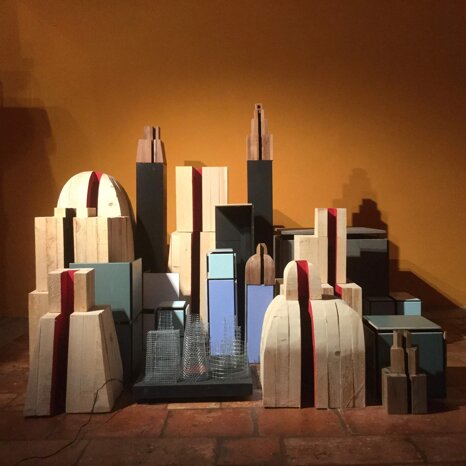postmaster@museumofanthropocenetechnology.org, via Leggiuno 32
2014 Laveno Mombello
Italia

The city is a collection of things and (therefore) able to go beyond some of the dualisms of modernity. We consider here the cities of the old World, still in use today. We imagine the invisible cities along the silk road described by Marco Polo to the Great Kublai Khan (Cat. Nr. 19). These cities were built by humans, guided by the opportunities offered by nature or by the heavenly stars. They are both artificial and natural. They are collectives: collections of humans and non-humans, people, trees, rivers, buildings, ... They host individuals as well as groups. They provide private and public meeting places. All these elements come together in the city: the city allows for meshing together professions, classes, generations, past, present, and future. The city inspires and is the result of that inspiration. All this was more or less claimed by the Italian architect Aldo Rossi (1931-1997), who went on to say that the essence of a city is to be found in its typology and that of its buildings: a typology expressed in their form rather than in their function. (As long as all forms haven’t found their city, new cities will emerge. Italo Calvino writes). Types are fundamental constants, transferred from the deepest of times, they are unshakable elements of the architecture of the city. They speak to reason and emotion, and can only be fully understood by living the city. For Rossi, as for Shakespeare, the architecture (of the city) is the fixed stage for human life. Rossi, however, adds that architecture is fundamentally a human construction, so that the stage cannot be that fixed after all. (see also Cat. Nr. 22),
Nr. 14 - ARCHITECTURAL II2019, MAT
Nr. 14 - ARCHITECTURAL II
2019, MAT
postmaster@museumofanthropocenetechnology.org, via Leggiuno 32
Laveno Mombello
21014
Italia